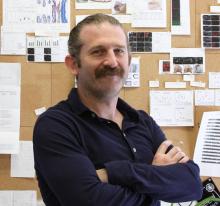
Dr Ashley W Seifert
Department of Biology, University of Kentucky
- 09:30
- G19 Ground Floor , 15 Innovation Walk Monash University Clayton Campus
- Associate Professor Jan Kaslin
Acomys the regenerating mouse: Leveraging comparative biology to uncover basis of tissue regeneration in mammals.
Abstract
Spiny mouse can regenerate hair follicles, cartilage, and skin in ear punches provides a new opportunity to uncover molecular changes that permit regeneration in an adult mammal. Using their ears as a regenerative system, the Seifert lab has studied how these animals generate and maintain a regeneration blastema. A longstanding question in regeneration biology has centered on whether the mammalian immune system and scarring contributes to constrain regenerative capacity. We are currently developing a project to examine the local response to injury and test the hypothesis that trade-offs in immunity along (1) innate vs. adaptive and (2) pro vs. anti-inflammatory axes underlie variation in the ability and rate of regeneration. Ongoing work by Dr. Seifert and his group have demonstrated that resident macrophages are required for tissue regeneration and that infiltrating macrophages regulate inflammatory magnitude. Additionally, his group has uncovered cellular mechanisms that direct injury signals to regulate the balance between proliferation and cellular senescence, mechanisms that can be affected to drive regenerative healing in laboratory mice.
Bio
Ashley W. Seifert is currently an Associate Professor at the University of Kentucky in the Department of Biology where his research group investigates animal regenerative biology and development. Following his discovery that spiny mice could regenerate skin, musculoskeletal tissue and other organs, his lab has pioneered African spiny mouse (Acomys) to study complex tissue regeneration in mammals. The ultimate goal is to understand how tissue regeneration occurs in a natural biological context and use this understanding to inform the development of regenerative therapies.
